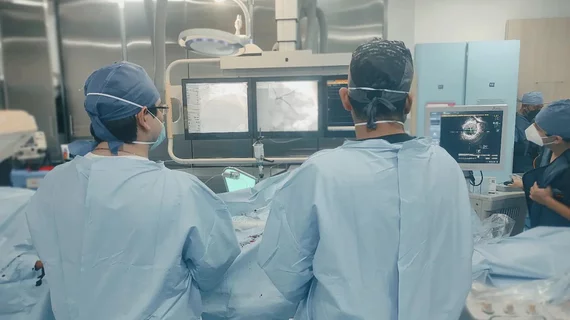New ACC/AHA/SCAI guidance highlights training requirements for interventional cardiologists
The American College of Cardiology (ACC), American Heart Association (AHA) and Society for Cardiovascular Angiography and Interventions (SCAI) have collaborated on a new guidance document focused on helping trainees prepare for a long, successful career in interventional cardiology. The first-of-its-kind document, published simultaneously in the Journal of the American College of Cardiology, Circulation: Cardiovascular Interventions and the Journal of the Society of Cardiovascular Angiography and Interventions, was designed with both trainees and program directors in mind.[1]
“With this groundbreaking document, the writing committee provides a roadmap for both program directors and interventional cardiology trainees to help them progress through important training milestones,” interventional cardiologist Theodore A. Bass, MD, chair of the document’s writing committee and immediate past president of SCAI, said in a prepared statement. “The document defines the required competencies for the full scope of interventional cardiology, providing trainees for the first time with the information to support training across all these areas.”
The training pathway for cardiovascular fellows, as outlined in the ACC/AHA/SCAI document, includes a three-year general cardiovascular disease fellowship and a one-year accredited interventional cardiology fellowship. The groups also recommend trainees to consider additional post-fellowship training if needed based on their specific career goals.
In addition, the groups wrote, certain competencies are “essential” for all interventional cardiology trainees. These include Medical Knowledge, Patient Care and Procedural Skills, Practice-Based Learning and Improvement, Systems-Based Practice, Interpersonal and Communication Skills, and Professionalism. Additional competencies related to peripheral vascular interventions (PVI) and structural heart interventions (SHI) are also recommended if the trainee plans to spend their career in cardiology focusing on either of these areas.
The new guidance document also includes details on the number of procedures that an interventional cardiology trainee should complete. Trainees should perform a minimum of 250 interventional cardiology procedures, for example. While 200 of those procedures should be coronary procedures, the remaining 50 should then be focused on coronary interventions, PVI or SHI. Performing at least 25 procedures focused on physiologic assessment and intracoronary imaging is also recommended.
“These minimum numbers are meant to provide trainees with exposure to a variety and spectrum of complexity of clinical case material and give supervising faculty sufficient opportunity to evaluate trainees' competency,” the groups explained in their joint statement.
The American Association for Thoracic Surgery, American Society of Echocardiography, Heart Failure Society of America, Heart Rhythm Society, Society of Cardiovascular Anesthesiologists, the Society of Cardiovascular Computed Tomography, Society for Cardiovascular Magnetic Resonance, the Society of Thoracic Surgeons and Society for Vascular Medicine all also helped develop this document and endorsed its recommendations.
Read the full guidance here.

